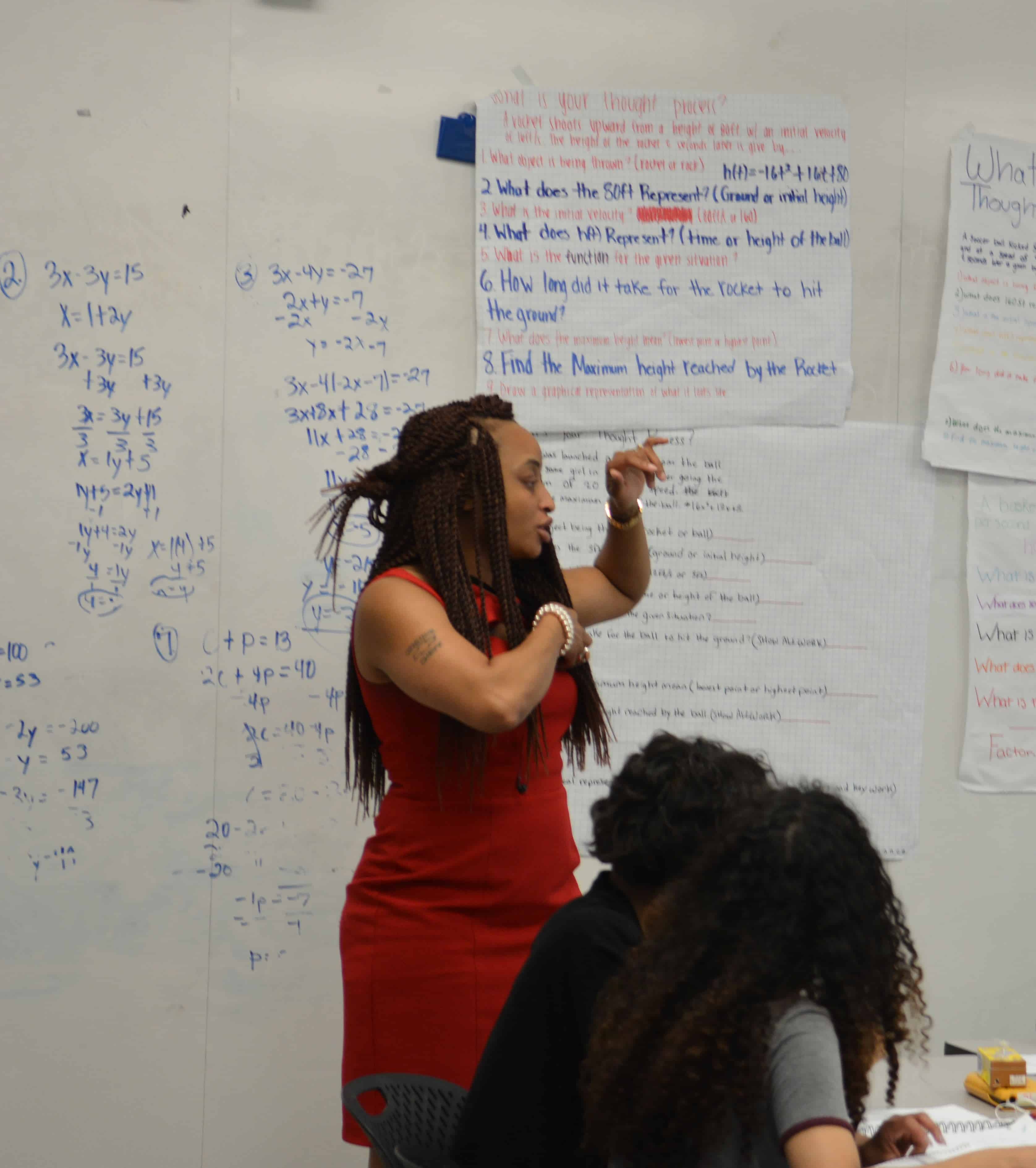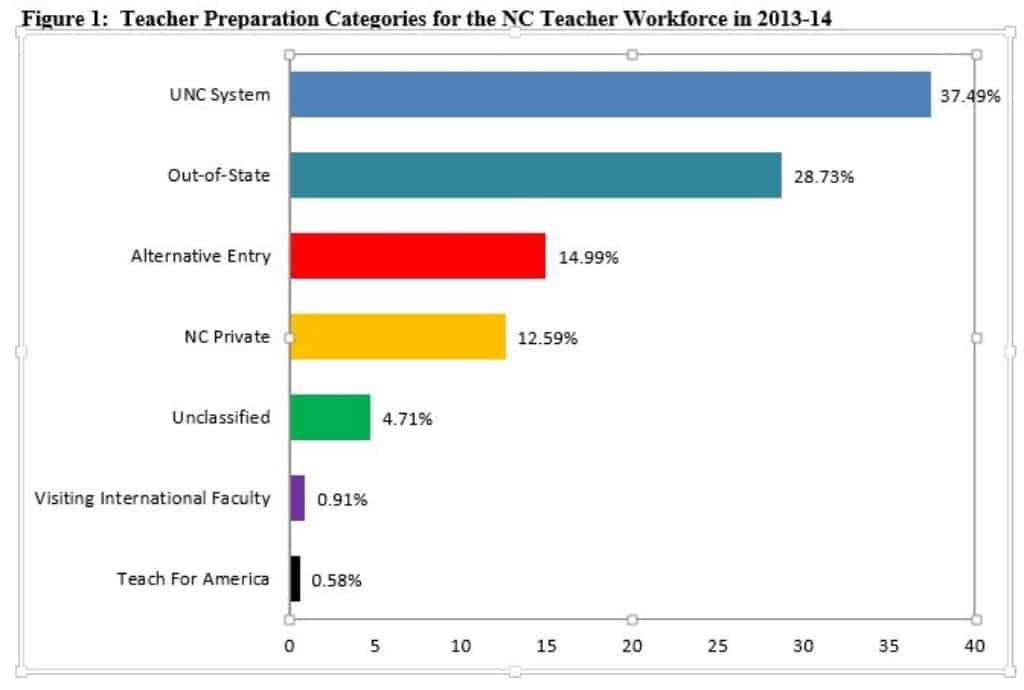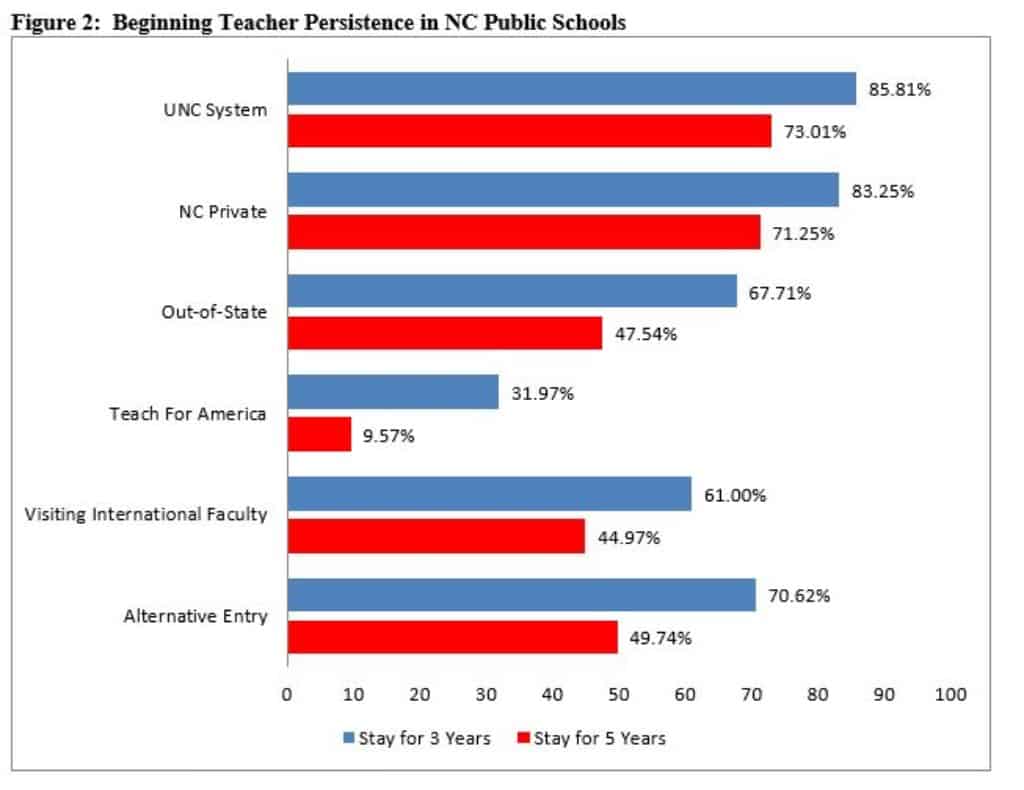Who will staff the classrooms of North Carolina’s public schools?
While always important, given the connections between teachers and academic outcomes, this question has assumed greater significance in recent years as North Carolina reports higher levels of teacher turnover, in-state colleges of education experience sharp declines in enrollment, and school districts struggle to fill teaching vacancies. Since 2010, annual teacher turnover rates in North Carolina have increased from 11 to 15 percent and enrollment in UNC system teacher preparation programs has fallen by more than 30 percent.
These trends call for action at the state and school district level to make teaching a more attractive and inviting profession.
But in the rush to address teacher shortage concerns, considerations of teacher quantity should not be separate from those of teacher quality.
North Carolina must recruit and retain more and higher quality teachers.
Towards this end, research on teacher performance and persistence needs to be connected to policy and hiring decisions. The Education Policy Initiative at Carolina (EPIC) conducted a study to assess the performance and retention of teachers entering the profession with different forms of preparation. These preparation types include the UNC system, North Carolina private/independent colleges and universities, out-of-state colleges and universities, Teach For America (TFA), Visiting International Faculty (VIF), and all other alternative entry routes. Three findings from these analyses are particularly important for education stakeholders in North Carolina.
First, teachers in North Carolina enter the profession through many different routes.
While the UNC system is the largest supplier of teachers to the state’s public schools—comprising approximately 37 percent of the workforce in 2013-14—North Carolina’s teacher workforce is also comprised of many in-state private university (12.59 percent), out-of-state university (28.73 percent), and alternative entry teachers (14.99 percent). Teach For America corps members attract significant policy attention but make up less than 1 percent of the state’s teachers. Larger teacher preparation groups impact outcomes for more schools, classrooms, and students; thus, the size of the preparation group should be considered when interpreting research results.
Second, UNC system prepared teachers often outperform the state’s other large suppliers of teachers, in terms of student test scores and evaluation ratings, but are less effective than preparation categories that supply small percentages of the state’s teacher workforce.
For example, across multiple comparisons, adjusted-average student achievement and teacher evaluation ratings are higher for UNC system prepared teachers versus out-of-state, alternative entry, and in-state private university prepared teachers. Conversely, TFA corps members and VIF have higher values for both teacher outcomes. Overall, many of these performance differences are not large in magnitude, but they take on practical significance given the number of students who are taught by teachers in these preparation categories.
Finally, in-state prepared teachers—from both public and private institutions—exhibit greater commitment to teaching in North Carolina.
Tracking three cohorts of beginning teachers, approximately 84 and 72 percent of in-state prepared teachers return for a third and fifth year of teaching, respectively. By comparison, less than half of out-of-state prepared and alternative entry teachers return for a fifth year. Perhaps unsurprisingly, given that TFA corps members commit to teaching for two years in high-need schools, the program has the lowest three- and five-year retention rates.
So what do these findings mean for North Carolina and efforts to staff the state’s classrooms?
State policymakers and university officials must find ways to encourage more North Carolinians to complete teacher preparation programs and teach in the state. Furthermore, the role of research is vital in better understanding the components of effective teacher preparation and incentivizing in-state teacher preparation programs to continue improving through data-driven reforms. During a time of teacher shortages, a commitment to research can keep the state focused on the goal of more and higher quality teachers.
Here is the full research report.







